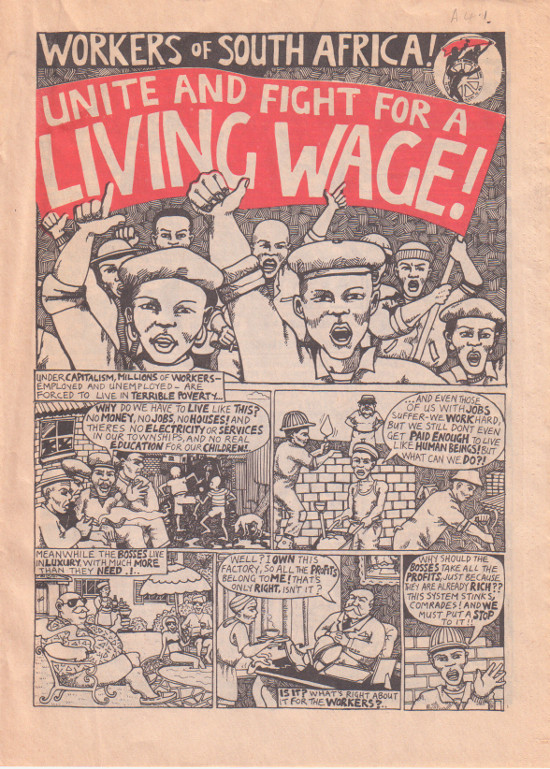 From the 1930s to the 1960s, there were many attempts to create a strong trade union movement. However, during this period, the movement was vulnerable and fragile and faced many obstacles.
From the 1930s to the 1960s, there were many attempts to create a strong trade union movement. However, during this period, the movement was vulnerable and fragile and faced many obstacles.
• The nature of the African working class living in towns made organisation difficult. The workforce was fragmented and there was a high turnover of jobs.
• Migrant workers were difficult to organise because they were not a stable workforce. They were forced to return to the reserves, and later the homelands, when their contracts ended. When they returned to work, it was often at a different place.
• African unions were not recognised and strikes were illegal. The state reacted harshly towards any kind of union activity.
In the 1930s South Africa experienced rapid economic growth and there was an increasing demand for labour.This was intensified when the Second World War broke out and many Africans moved into semi-skilled positions to replace white workers who had gone to fight in the war. The war increased the bargaining power of the African working class. Both the state and employers wanted to maintain production so that the war effort was not disrupted. As a result, trade union activity increased. In 1939, the Joint Committee of African Trade Unions (JCATU) was formed when 20,000 workers from eleven different unions joined together. They aimed at building solid shop-floor structures with strong leadership. They worked with the Wage Boards*to try to improve workers’ wages and conditions. Although JCATU was small and vulnerable, it provided its unions with strong shop-floor structures and established a working model for trade union growth.
The Communist Party of South Africa (CPSA) played an important role in building the trade union movement in the 1940s. In particular, it established the Congress of Non-European Trade Unions (CNETU) which claimed a membership of 158,000 workers in 119 affiliated trade unions by 1945. However, these affiliates* were not linked to each other which led to fragmentation. CNETU was also hampered by divisions within its leadership, particularly with regards to the role of the CPSA. The CPSA often prevented CNETU from acting in the interests of its workers. Because the CPSA supported the Soviet Union in its fight against Germany, they argued that tradeunions should not strike during the war. Membership of CNETU declined rapidly after the war.
In 1946, 76,000 mineworkers from theAfrican Mine Workers Union (AMWU)went on strike. During the war period, conditions on the mines deteriorated rapidly. African mine workers were not given a cost of living increase as the Wage Board that migrant labourers did not need an increase. They also experienced severe shortages and they lived in shocking conditions in mining compounds. Police responded violently to this strike. Twelve workers were killed and over 1,200 injured. The brutal crushing of the strike effectively destroyed AMWU. Nevertheless, despite its failure, the 1946 strike was an important landmark as it was the first time that mine workers had been organised and gone on strike.
Exhibitions in the classroom
Reading the past:
Source: 'Workers of South Africa! Unite and fight for a living wage!'- COSATU pamphlet, date unknown
Examine the cartoons in the source and try to identify the issues workers were fighting for. What would you say is the value at the core of them all? Compare your answer to your neighbour’s answer. Are they the same or different? Discuss further.
Making connections between the past and present:
“We demand decent education and training for all!”
Divide your page into two sections. In the one section, draw a school in the 1950s and label everything you think is not ‘decent.’ In the other section of the page draw your school today and label everything you think is‘not decent.’ What do you notice? Are they similar or different? Explain your reasons.
*Wage boards – these were established by the state to establish minimum wages in industry
* affiliates – these are organisations that are officially attached or linked to a larger organisation
NEXT: The call for a non-racial union



